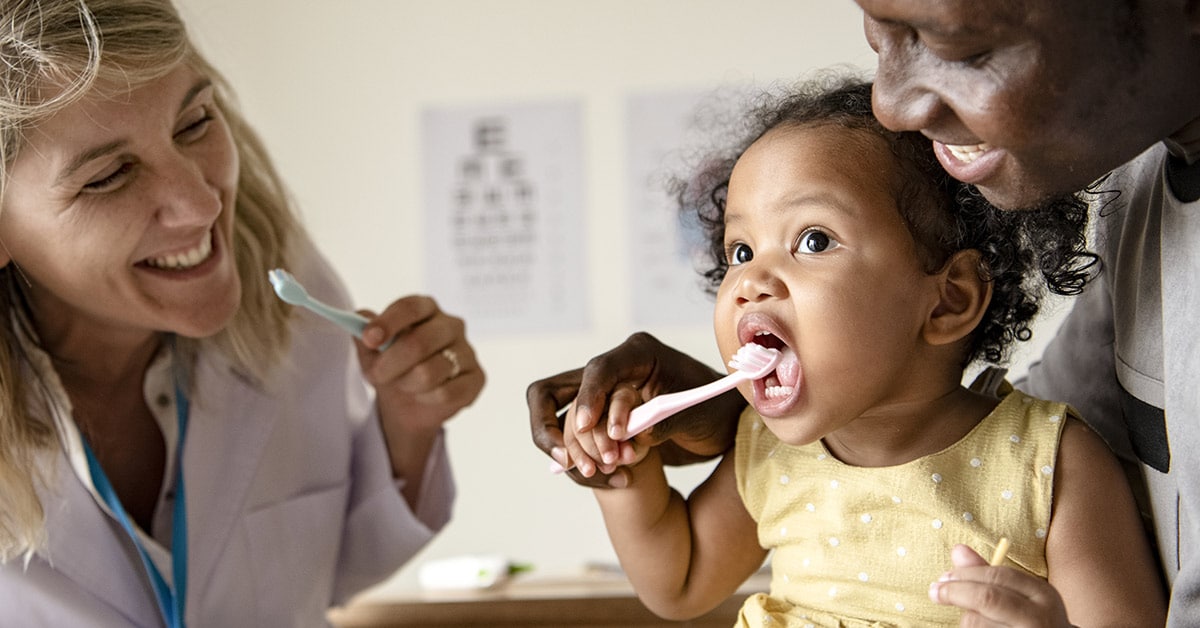Understanding Asthma Symptoms and Treatment for Children
Asthma tends to run in families and has been linked to allergies and obstructive sleep apnea. Approximately one in every 15 children has asthma, which can occur at any age.
Asthma tends to run in families and has been linked to allergies and obstructive sleep apnea. Approximately one in every 15 children has asthma, which can occur at any age.
According to the American Academy of Pediatrics, pediatric epilepsy affects about 470,000 children and is the most common childhood brain disorder in the United States. Children with epilepsy have unprovoked seizures caused by a sudden change in electrical activity in the brain.
If your child wets the bed at night, you are not alone. According to the National Kidney Foundation, 5-7 million children in the United States wet the bed at night.
As of March 6, 2025, the United States has had three measles outbreaks and a total of 222 cases across 12 states- a significant increase when compared to 2024.
Gracias por acompañarnos estamos aquí en DMG estamos en el Departamento de Salud Mental y comportamiento y quiero saber qué es lo que tienes ahí platícame Qué significa eso Este es un corazón se es una actividad que hago con mis pacientes
Muy buenas tardes gente la Tricolor aquí me encuentro con arlín en dmg Sears y nos va a estar platicando de su rol aquí tan importante para los niños nombre serlín yo trabajo aquí desde el 2019 mi error es que integrar el cuidado…
Spina bifida is a birth defect in which an area of the spinal column does not form properly, leaving a section of the spinal cord and spinal nerves exposed through an opening in the back.
Hola qué tal Muy buenos días Nos encontramos otra vez en dmg aquí me encuentro con Gabriela Gabriela Muchísimas gracias por tomarte un tiempo de tu vida tan ocupada aquí y vamos a empezar Qué es una trabajadora social una trabajadora es más una persona para poder ayudar a esas familias agarrar los recursos…
DMG Children’s Rehabilitative Services (DMG CRS) registered dietitian, Dominica Dieffenbach, RDN, shares why starting your child off with healthy nutritional habits is critical to their future health.
As a child with spina bifida grows, complications associated with the disease may surface and potentially deteriorate some of their physical and mental functional abilities. The goal of treatment is to monitor for these issues and try to prevent them.
By Troy Nelson, MD, medical director and pediatrician

Whether it’s childhood immunizations or vaccinations for the flu or COVID-19, getting a vaccine is an anxiety-causing process for many children. If your child has special needs or a complex medical condition, getting vaccinations can be more stressful for both you and your child.
Here’s some tips for supporting children with special needs getting vaccinated.
As pediatricians, our goal is to make every child’s appointment positive and comforting. Partnering with parents or guardians is key to this goal and making your child feel confident and safe with their medical providers. We’re here to listen and support you in managing your child’s health and wellness.
By Pamela Murphy, MD, pediatrician

As a pediatrician, I am asked frequently about childhood vaccinations. Are they safe? Do they cause one disease while trying to prevent another? As a parent or guardian, it’s our responsibility to provide safe care for our children and asking questions and getting the facts from credible sources are part of that responsibility.
U.S. public health officials and physicians have been combating misconceptions about vaccine safety for more than twenty years. Despite these efforts, childhood immunization rates have fallen in the past two decades resulting in resurgences of vaccine-preventable diseases such as whooping cough (pertussis) and measles. For example, in 2010, California saw more cases of whooping cough than any year since 1947, according to research published by the American Academy of Pediatrics.
August is Immunization Awareness Month. Let’s look at what childhood vaccinations are recommended when and address the most common misinformation about childhood vaccinations.
The Centers for Disease Control and Prevention (CDC) has easy to review children’s vaccines schedules by age group on their website. Most pediatricians and primary care providers (PCP) have these vaccinations available and can administer during a scheduled appointment.
In addition to any vaccines missed that were recommended during early childhood, the CDC recommends the following vaccines for kids ages 7-18:
If your child has certain health conditions that put them at increased risk for serious diseases, your pediatrician may also recommend the following vaccinations be administered:
The CDC also recommends children ages six months and older receive the COVID-19 vaccination, and children ages five and older also get the booster. The COVID-19 vaccination is not available at all pediatrician/PCP offices. For more information on COVID-19 vaccinations for children, including locations providing these vaccinations, visit the Maricopa County Public Health website.
According to PublicHealth.org, the following are the top three myths about childhood vaccinations.
Myth #1: Vaccines increase the risk of autism.
This hypothesis originated in 1997 from study by a British surgeon who concluded that the MMR vaccine was increasing autism in children in the United Kingdom. The article “has since been completely discredited due to serious procedural errors, undisclosed financial conflicts of interest, and ethical violations.” The physician author lost his medical license, and the paper was retracted.
Myth #2: Infant immune systems can’t handle so many vaccines.
The cells in the immune system are constantly being replenished, making it near impossible for a baby’s immune system to be overwhelmed by immunizations. In fact, babies are exposed to numerous bacteria and viruses every day; vaccines are minor in comparison.
Myth #3: Natural immunity is better than vaccine-acquired immunity.
While in some cases, catching a disease and getting sick (i.e., “natural immunity”) results in a stronger immunity to the disease than a vaccination, the risks outweigh the benefits. For example, if a child were to catch the measles, they would face a one in 500 chance of death from symptoms; in contrast, having a severe allergic reaction to the MMR vaccine is less than one-in-a-million according to the CDC.
As families travel more, especially internationally, the risk of contracting vaccine-preventable diseases increases. Even if the disease is not prevalent in the United States, it may be in other countries. COVID-19 gave us a strong example of how quickly a virus can spread from one continent to the next.
If you have questions about childhood immunizations, talk with your child’s pediatrician/PCP. We’re here to help you keep your child healthy and happy.
By Troy Nelson, MD, medical director and pediatrician

The baby formula shortage in the United States has prompted the need to find solutions to decrease the risk of a shortage impacting the country again. According to a recent article by NPR, often overlooked in the race to fill the gap is the most natural alternative: mother’s milk.
The American Academy of Pediatrics recommends “exclusive breastfeeding for about six months, followed by continued breastfeeding as complementary foods are introduced, with continuation of breastfeeding for one year or longer as mutually desired by mother and infant.” Despite this recommendation, 2018 data published by the Centers for Disease Control and Prevention (CDC) revealed that only one in four babies born in the United States met this target; in Arizona, 50%-60% of babies met this target.
So, why do mothers stop breastfeeding? According to the CDC, how long a mother breastfeeds is impacted by:
The Surgeon General’s Call to Action to Support Breastfeeding as well as medical experts in women’s health and pediatrics continue to push education about the benefits of breastfeeding. Let’s look at the benefits to you and your baby.
According to HealthyChildren.org, an AAP website, breastfeeding provides emotional, mental and physical health benefits to a mother, including:
Release of good hormones: During breastfeeding, hormones such as prolactin and oxytocin are released which produce peaceful, nurturing, and relaxing sensations that promote bonding with your infant.
Quicker uterus recovery: Oxytocin, released during breastfeeding, helps return the uterus to its regular size more quickly and can reduce postpartum bleeding.
Potential reduced risk of disease: Some studies have found that breastfeeding may reduce the risk of developing breast and ovarian cancers, cardiovascular disease, rheumatoid arthritis, and type 2 diabetes.
Natural contraception: Exclusive breastfeeding delays the return of the mother’s menstrual period, which can help extend the time between pregnancies.
Less expense: Formula can cost four to ten dollars a day or $1460-$3650 annually.
Ease of preparation: Human milk directly from the mother is the right temperature, so no taking time to warm bottles of formula.
Ease of travel: Whether you are going out to run an errand or for the day, no need to bring a bag of temperature-controlled formula.
Environmentally friendly: You get the satisfaction of knowing you are not contributing baby formula cans and packaging to landfills.
Breast milk provides a baby with ideal nutrition and supports growth and development. According to the CDC, the benefits of breast milk for your baby include:
The best source of nutrition for most babies, because as the baby grows, the mother’s milk will change to meet the baby’s needs.
Shared antibodies from the mother with her baby
Supports proper brain development through docosahexaenoic acid (DHA), a polyunsaturated fatty acid found in breast milk
Helps protect babies against some short- and long-term illnesses and diseases and decreases the risk of:
If you have questions about breastfeeding or want more information, please contact your women’s health provider or pediatrician. We’re here to help you make the right decision for you and your baby and provide the support and resources needed for you to care for your newborn.
By Megan Aros-O’Malley, PhD, pediatric psychologist

May is Mental Health Awareness Month. Unfortunately, children in the United States are currently facing a mental health crisis. Data from the Centers for Disease Control and Prevention (CDC) indicate that one in five children has a mental or behavioral health condition such as anxiety, depression, attention-deficit/hyperactivity disorder, autism spectrum disorder or disruptive behavior disorder. However, only about 20% of these children received care from a mental health provider.
Parents are often the first to recognize that their child is struggling emotionally and/or behaviorally. A few signs that a mental health difficulty could be arising include (but are not limited to):
Untreated mental health conditions can have many short- and long-term impacts on children’s development, social and behavioral functioning, and home and school life.
Fortunately, help exists. DMG includes pediatric psychologists and counselors available to meet the mental health needs of children of all ages. Our behavioral health providers collaborate with families to develop a comprehensive treatment plan that can include services such as consultation, psychotherapy and/or psychological testing. Furthermore, DMG behavioral health providers will partner with your child’s pediatrician/primary care provider and other specialists, as needed, to provide your child comprehensive care.
by Misty Cox, FNP-C, WHNP-BC, Family Nurse Practitioner

Do you know anyone who has recently had Haemophilus influenzae type b (Hib)? Do you know what Hib is? Probably not in both cases. Affecting mostly children under five years-old, Hib is a disease that can seriously damage a child’s immune system and cause brain damage, hearing loss, or even death. According for the Centers for Disease Control and Prevention (CDC), before the four dose vaccine was available, approximately 20,000 children were affected by Hibs annually.
Hib is just one of many diseases we rarely encounter any longer thanks to vaccines. More than 16 diseases can be prevented or decreased in severity if vaccines are proactively administered. The most current example is COVID-19 and associated variants, including delta.
August is Immunization Awareness Month, so let’s review vaccines recommended throughout our lifetimes.
Please consult your primary care provider (PCP) for more information on recommended vaccines, timing, number of doses and when to receive based on medical history, risks, and other factors.
The CDC has easy to review children’s vaccines schedules by age group on their website.
In addition to any vaccines missed that were recommended during early childhood, the CDC recommends the following vaccines for kids ages 7-18:
If your child has certain health conditions that put them at an increased risk for serious diseases, your PCP may also recommend the following vaccinations be administered:
The CDC also provides information to adults to help adults understand what vaccinations are recommended based on age, lifestyle, medical conditions, and more.
If you have one of the following medical conditions, talk with your PCP about additional vaccinations that may be recommended to decrease your risk of serious illness and complications.
If you fall into one of the following categories, additional vaccinations may be recommended. Consult the CDC website for more information or speak with your PCP.
The COVID-19 vaccine is highly recommended to fight against the coronavirus and variants, like delta. This vaccine is now available for everyone age 12 and older. For the most current information on the COVID-19 vaccine, please visit the CDC website.
If you have questions about what vaccinations you and your family need, DMG primary care providers (PCP) are here for you. To find a DMG PCP at a location near you, click here. We’re here to support the health of you, your family, and the entire community.
By Troy Nelson, MD, medical director and pediatrician

March is Developmental Disabilities Month. According to the Centers for Disease Control and Prevention (CDC), the United States has experienced an increase in children with developmental disabilities. Developmental disabilities would include:
The same CDC study also revealed that some groups of children were more likely to have a developmental disability than others, such as:
The CDC found that 17% of children 3–17 years-old had a developmental disability, and this percentage increased over the two time periods compared (2009–2011 and 2015–2017). Specifically, diagnoses increased for ADHD, ASD and ID.
One of the potential reasons for the documented increase is improved awareness, screening, diagnosis and service accessibility. Healthcare providers and parents/guardians are having more conversations about symptoms (called “developmental delays”) of developmental disabilities early, allowing for improved diagnosis and early intervention.
Parents or guardians are in the best position to detect a developmental delay in an infant or toddler. Developmental delays fall into five categories:
If you sense a developmental delay in your child, surface your concerns to your child’s primary care provider (PCP) immediately. Your child’s PCP will assess your child through a developmental screening and engage the right specialists and support, as needed, to optimize early intervention.
“Early intervention” describes services and support that help babies and toddlers (from birth to three years of age, in most cases) with developmental delays or disabilities. Early intervention may include speech therapy, physical therapy, behavioral health support and other types of medical services based on the needs of the child and family.
According to the CDC, intervention is likely to be more effective when it is provided earlier in life because:
If you have questions about your child’s development, schedule an appointment with your child’s pediatrician or PCP. If you have not established care for your child with a PCP, DMG is here for you; our team includes pediatricians and primary care providers across the Valley to support the health of children of all ages.
By Melissa Meyer, PMHNP-BC, DNP, child psychiatry specialist

2020 has been a year like no other, especially for children. Kids have had to completely change their routines, including:
All the above activities are critical to providing balance to a child’s life, and without these options, children, like many adults, may be feeling isolated. And to top it off, we don’t know when things will change and return to “normal.” As a result, children may feel increased stress, fear, anger, hopelessness, anxiety and may experience depression.
Depending on how old your child is, they may deal with and reveal these emotions in different ways. Adolescents and young adults may try to hide their struggles because of fear, shame, or a sense of responsibility to avoid burdening others. Younger children may not know how to talk about these feelings but may show changes in their behavior or development.
Here’s some tips for supporting your child through these uncertain times and helping them deal with these confusing emotions.
DMG has behavioral health providers to support children of all ages as well as adults. As a parent, you’re not alone; healthcare providers are here to support the health of your child and your entire family.
By Troy Nelson, MD, medical director and pediatrician

Did you know November is American Diabetes Month? According to the American Diabetes Association, more than 34 million people in the United States have diabetes, and more than seven million of those people are undiagnosed. About 210,000 Americans under age 20 are estimated to have diagnosed diabetes.
According to the Centers for Disease Control and Prevention (CDC), type 1 diabetes accounts for approximately 5-10% of diabetes cases in the United States. Symptoms of type 1 diabetes often develop quickly. It’s usually diagnosed in children, teens and young adults.
Type 2 diabetes is the most common type and is generally diagnosed in middle age or older. However, the incidence is on the rise in children, because more children are becoming obese. Being overweight or obese increases the risk of developing type 2 diabetes, regardless of age.
Your child may develop type 2 diabetes so gradually that there are no noticeable symptoms. Sometimes, the disorder is diagnosed during a routine check-up, which is why regular well-child exams are important.
Symptoms of type 2 diabetes in your child may include:
• Blurry vision
• Darkened areas of skin, especially around the neck and armpits
• Fatigue
• Frequent urination
• Increased thirst
• Age and sex: Many children develop type 2 diabetes in their early teens. Adolescent girls are more likely to develop type 2 diabetes than are adolescent boys.
• Family history
• Inactivity
• Overweight, especially in the abdomen
• Pre-term birth (before 39-42 weeks)
• Race or ethnicity: Black, Hispanic, American Indian and Asian American people are more likely to develop type 2 diabetes
You can help decrease the risk of your child getting type 2 diabetes as well as help manage it if your child has been diagnosed.
• Get an annual well-child exam with your child’s pediatrician or family medicine provider.
• Eat healthy foods as a family; encourage your child to participate in meal planning and preparation.
• Ensure your child gets plenty of physical activity; identify activities you can do as a family, like hiking or walking the dog.
• Help your child maintain a healthy weight.
DMG includes pediatric and young adult providers, pediatric and adult endocrinologists and other medical specialists to support your child and your family. We are committed to educating you and your child and developing treatment plans to optimize your child’s health and long-term wellness.
By Melissa Meyer, PMHNP-BC, DNP, child psychiatry specialist

The holidays are a time of peace, love, joy and family, but it’s also a time where schedules are irregular, routines are disrupted, meals are heavier, and sugar abounds. For children of all ages, these changes can be difficult; if the child has depression, anxiety, an eating disorder, attention deficit disorder (ADHD) or other emotional or behavioral health challenges, the holidays can compound the issue.
If your child suffers with emotional or mental health issues, here’s some tips to help you child and your family decrease the stress and impact of the holidays:
Most importantly, be aware of the child’s mood and listen to them. Your child or teen may need some downtime in between the hustle and bustle of the holidays. Allow time in the family’s schedule for everyone to decompress, so each member of your family can enjoy the spirit of the holidays.
By Lyn Hughes, dental hygienist

October is Dental Hygiene Month, which is somewhat ironic as Halloween, the day of the year where children probably get more candy than ever, is also in October. So, why not take this month to talk to your children about the importance of taking care of their teeth?
Getting your children into healthy dental habits now can save them time and pain and give them advantages throughout their lives. According to the American Journal for Public Health, children who have poor oral health often miss more school and receive lower grades than children who don’t.
Did you know cavities are one of the most common childhood diseases in the United States?
When untreated, tooth decay can cause pain and infections which can lead to problems with eating, speaking, playing and learning. In addition, poor oral health can lead to cardiovascular issues due to harmful bacteria entering the bloodstream.
The CDC also shares these facts about cavities in children:
Beginning dental care when your child is a baby is a great first step towards optimal dental health. Schedule your child’s first pediatric dental care appointment at the age of one to spot signs of early problems. If you have more questions about how your child’s dental health can impact their physical and emotional health, talk with your child’s pediatrician or primary care provider.
